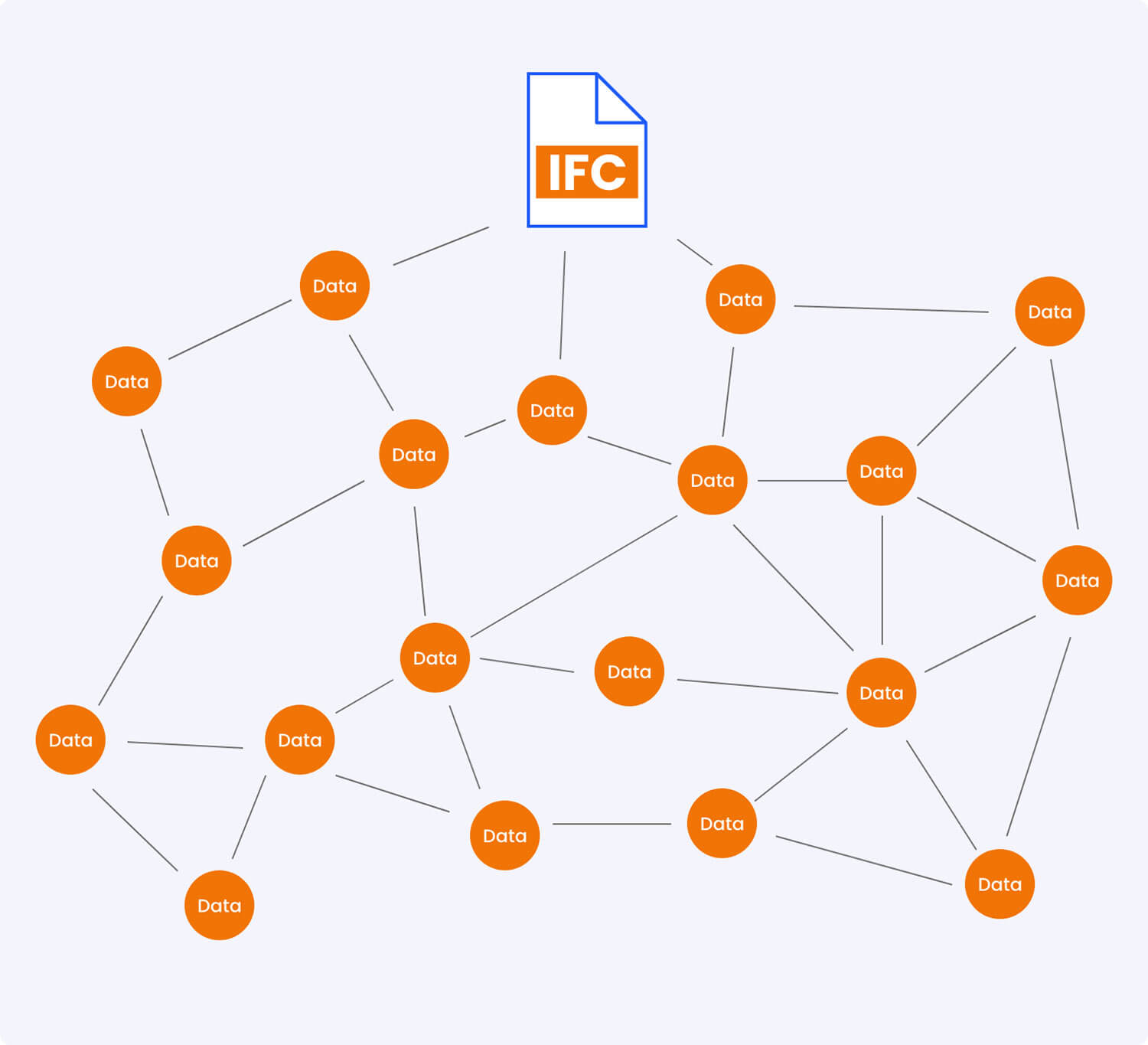BUILDING DATA
What is the IFC data format?
Let’s take the definition of buildingSmart as a starting point “IFC is a digital and standardized description of a built asset, it is an open format, respecting an international standard (ISO 16739-1: 2018)”
In this definition, we find expressed the full potential of this format.
The numerical description has two meanings: the geometric part of the 3D model and the data part of the building on all these disciplines.
The open format of the data, for some it is abstract: but it means freedom, that is to say that the user can access the data models accessible on the buildingSmart site; it is not the black box of a proprietary format.
Iso standardization is often forgotten but is necessary: it is a quality requirement on the format validated by expert colleges. Making IFC is not limited to visual but to a rigor in the expression of data.
These 3 characteristics make it possible to build a powerful digital twin with unlimited data potential: the owner must remain in control of his digital asset, it is the combination of standard and open, which makes the power of ifc.

But where does the genesis of an IFC file come from?
Design software is the origin of the IFC file, so there are several ways to export a native proprietary format to IFC. This export today depends on the software, which configures it according to its rules with more or less complexity: the expert user of his job is often lost in front of this parameterization, which can require several skills (understanding geometric modeling and data modeling). These exports are of variable quality and cause a lot of reading difficulties.
Going beyond the visual to exploit the potential of data in force: The IFC was perceived as a “document” among others and was integrated into collaborative platforms focused on Electronic Document Management: only its visual content was mainly interested in design / construction; the putting of this data in real time was not possible and the gap between the digital model and the as built could not. shrink. Many actors (BIM managers, BIM consultants) have become data firefighters, to help end customers in difficulty with the magnitude of the task of feeding data to these files.

Navigating this vast ifC data field is an art: for connoisseurs, all the data in a file is organized in a graph (a subset of a global graph that would represent all the objects in the building, regardless of the discipline).
The data is linked together: this is why the representation in the form of an Excel table, which each user wants, is not ideal for transforming this data into a graph. Modifying a data requires mastering this graph and the impacts it can have on other data.
This data graph can be enriched by all types of data: an object (wall) can be connected to standard properties (exterior, carrier) but also to custom properties.
The IFC is a standard in which several standards coexist specific to categories of data (attributes, properties, quantities) that apply to objects (ifc class) of the building. The user thus has a starting point to work with the data: he can create his own standards of properties and quantities and associate them with an object. He becomes the organizer of his data.
The exploration of IFC is a challenge: going beyond the classic characteristics (attributes, properties, quantities) to address new topics (economic, environment, materials, documentation,…) will revitalize its use. This is what motivated the creation of Wittym to make the full potential of this format simple and accessible.
